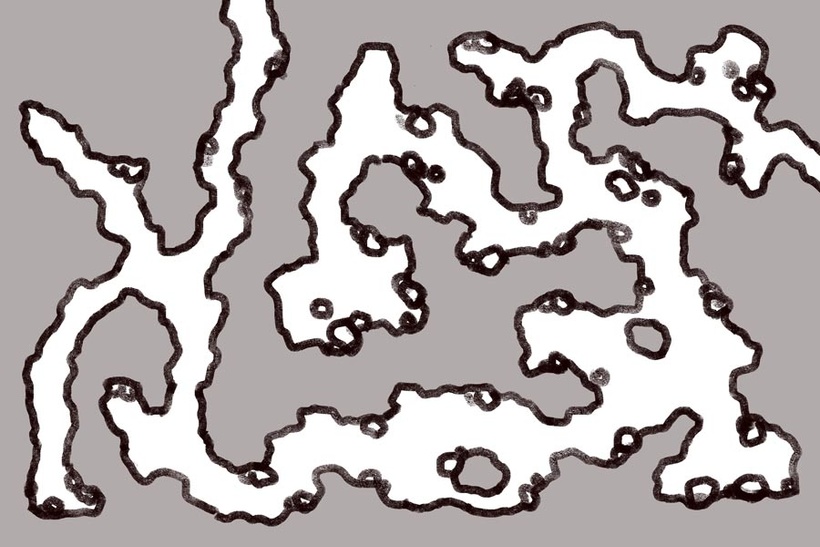Twisting Tunnels, Adept (Patreon)
Downloads
Content
Hello folks! This week's map is the Twisting Tunnels (30x25), not a very flashy one but extremely useful. In fact, it's so useful that I doubt anyone couldn't find an opportunity to use it in their campaigns. Thinking over my group's escapades, I can think of at least 5 times this map would have been handy, but then again I tend to hide a lot of my adventures in mysterious tunnels.
You alternate version this time is a wintery recoloring, the Frozen Tunnels! I haven't made an underground map snowy before, so this required a bit of craftiness and lots of reference pictures. I was trying to get a similar vibe to the wampa's cave on Hoth, but as it turns out white walls and white ground don't make for a particularly attractive map.

1. So, I was a little short on time this week, which was unfortunate considering how much time and effort needs to go into rock walls and stone floors for them to look nice. In the end I just compromised and chose to be even shorter on time and have a neat series of tunnels.
This map suffered somewhat from my desire to use up as much of the canvas as possible, I think. No one could argue that this layout is particularly realistic, it looks like something out of Skyrim, with twisting corridors that wind back into themselves and odd dead-ends. It really feels like a shame to leave chunks of the image empty though, so I went ahead with the kinda unnatural design. The only big change I would do now is knock down some of the walls near the center, giving the map more of a free form design that allows players to choose the direction they want to explore. Maybe just the western wall from the center chamber.

2. I really didn't have the time for this map this week, but I made time anyway. Rock walls require a lot of love and attention in order to not be eye-catchingly low on detail, in my mind at least. That's why I make them in 4 passes: 1. The outline, which gives shape to the walls and separates them from the ground; 2. The 'vertical' lines, the craggy parts that give the illusion of depth; 3. The 'horizontal' lines, the long wiggly parts that follow the contour of the walls and aid in expressing the depth and shape of the upper walls; 4. Hashmarks, the little scratches that hint at just a touch of texture, they're more important than you might think as they give a kinda dirty/craggy vibe to the walls.

3. Coloring underground areas have always been hard for me. My first attempt, the Infested Caves, was a pretty substantial failure which gave me lots of info on what to improve on. Most importantly, I realized I couldn't get caught up on light sources, as there aren't any unless I want to fall into the 'glowing mushrooms and crystals' trope. These days I just give light to whichever area looks like it could benefit from it, perhaps open areas that are likely to see a decent bit of combat, and some textured shadows to distract from the fact that there isn't a clear source of light. Tricky tricky.

